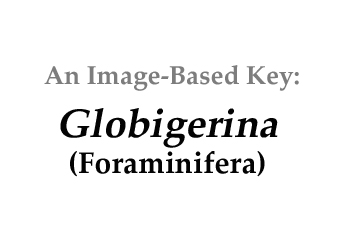|
Home / amoebae / testate / Foraminifera / Globigerina / |
||||
|
|
||||
|
Click on images for larger format |
||||
Name derivation: |
||||
|
|
||||
Classification: |
||||
Globigerina d’Orbigny 1826; 2 extant and 10 extinct species descriptions are currently recognized taxonomically.Phylum Foraminifera; Order Globigerinida; Family Globigerinidae |
||||
|
||||
|
Direction of coiling (dextral or sinistral) and size of test are related to growth conditions but apparently not directly to water temperature, although left-coiling appears to be positively related to test size. (Malmgren and Kennett 1976). Also, oscillations in size closely match late Quaternary palaeoclimatic changes, with a positive correlation of size and temperature ‘episodes’ (large size, warm episode) that can be used as a palaeoclimatic index (Malmgren and Kennett 1978).
|
||||
Similar genera: |
||||
|
|
||||
Habitat: |
||||
|
Marine plankton. ‘Globigerina ooze’ is a term used to describe large areas of oceanic benthos containing large quantities of Globigerina bulloides ‘shells’. Calcification of the test appears to be reduced (inhibited) when phosphate (PO4-2) concentrations are relatively higher (Aldridge et al. 2012). More recently stable nitrogen (N15/N14) isotopes have been measured in Globigerina tests to estimate the impact of iron-rich dust in fertilizing the subantarctic oceans during glacial periods. Given that iron was expected to be more limiting than either nitrates or phosphates, the hypothesis was that more dust would be distributed from land during glacial maxima, promoting more growth of phytoplankton that would reduce nitrogen and phosphorus, reducing N14 more than N15 (increasing δ15N and thus Globigerina fossils would contain N15-enriched organic nitrogen. Additional confirmation of rising plankton productivity came from rises in levels of alkenones, highly stable products of prymniophycean plankton (especially coccoliths) (Martinez-Garcia et al. 2014), supporting the ‘iron deficiency’ hypothesis (Martin et al. 1988).
|
||||
References: |
||||
|
Lipp, J.H. 1966. Wall structure, systematic, and phylogeny studies of Cenozoic planktonic foraminifera. Journal of Paleontology 40(6):1257-1275 + 1 plate. Loeblich, A.R. Jr, and H. Tappan 1964. Sarcodina Chiefly "Thecamoebians" and Foraminiferida; Treatise on Invertebrate Paleontology, Part C Protista 2. Geological Society of America and University of Kansas Press. Malmgren, B.A., and J.P. Kennett 1977. Biometric differentiation between recent Globigerina bulloides and Globigerina falconensis in the Southern Indian Ocean. Journal of Foraminiferal Research 7(2):130-148. Malmgren, B.A., and J.P. Kennett 1978. Test size variation in Globigerina bulloides in response to Quaternary palaeoceanographic changes. Nature 275:123-124. Martin, J. H., and S. E. Fitzwater 1988. Iron deficiency limits phytoplankton growth in the north-east Pacific subarctic. Nature 331:341–343 Martinez-Garcia, A., D.M. Sigman, H. Ren, R.F. Anderson, M. Straub, D.A. Hodell, S.L. Jaccard, T.I. Eglinton, and G.H. Haug. Iron fertilization of the Subantarctic Ocean during the last ice age. Science 343(6177):1347-1350. |
||||





